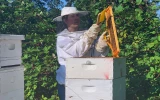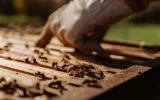Can You Use Salt Around Your Beehive Safely? (5 Uses)
Salt is a mineral that has many uses in a variety of settings, including around a beehive. But what does salt do to your beehive? Find out the five uses of salt around a beehive and how it can help protect your hive and keep pests away.
You can use salt around your beehive safely. Salt can be used to reduce the number of pests around the beehive as well as to deter ants from entering the hive. It can also be used to clean the hive and help control moisture levels. It can also be used as a natural sweetener for bees.
Salt sprinkled over the hive's frames and hive entrance can help ward off infestation. Let's discuss the steps that you should take to ensure the salt is used safely to protect your bees.
Summary
- Sprinkling salt onto the hive entrance and over the frames of the hive can help prevent infestation.
- Adding salt to the water feeder and mixing it with sugar can provide the bees with a great source of nutrients.
- The salt should ideally be applied around the entrance of the hive every few weeks, or at the very least after heavy rains, to guarantee optimal effectiveness.
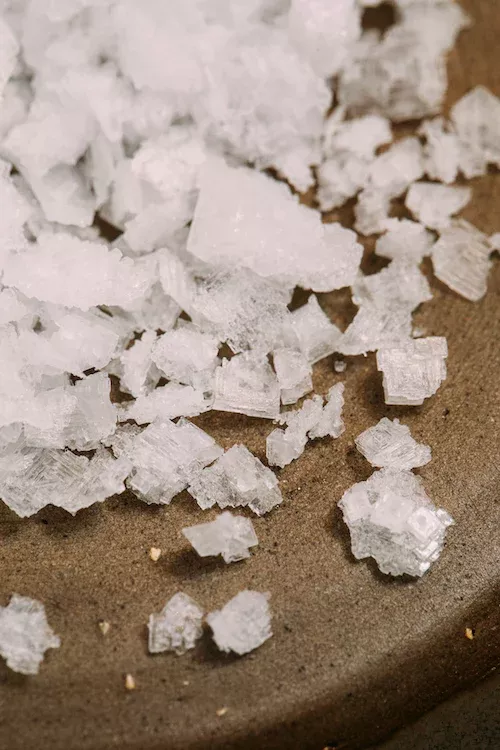
On this page:
Five Uses of Salt Around Your Beehive
You may be wondering if salt can be used safely around a beehive, and the answer is yes! Let's explore five unique ways to safely use salt around your beehive.
1. Adding salt to the water feeder.
Adding salt to the water feeder of a beehive can reduce the chances of disease around the hive. Salt helps to reduce the concentration of bacteria, fungi, and other organisms in the water. This can reduce the risk of infection and contamination in the beehive. The salt also helps to reduce the number of algae and other organisms that can grow in the water source. This can help to keep the water cleaner and reduce the risk of disease.
Additionally, salt can help to reduce the risk of parasites and other insects that can cause harm to the bees and other inhabitants of the beehive. By adding salt to the water feeder, beekeepers can help to reduce the risk of disease and increase the health of their beehive.
- Remove the water feeder from the beehive and make sure it is clean and free of debris.
- Fill the water feeder with clean, chlorine-free water.
- Add a teaspoon of salt to the water.
- Stir the water to dissolve the salt.
- Place the water feeder back onto the beehive.
- Monitor the water feeder regularly to make sure the bees have access to the salt-water solution.
By following these steps, beekeepers can ensure the beehive stays healthy, and the bees have a source of electrolytes and minerals.
2. Sprinkling salt onto the hive entrance.
Sprinkling salt around the entrance of a bee hive is a common, natural way of keeping ants away. The salt acts as a barrier, preventing the ants from entering the hive and making it difficult for them to come in contact with the bees or any of the hive's resources. The salt will not harm the bees, but will only repel the ants and keep them away.
Sprinkling salt around the entrances of a bee hive should be done regularly, as the salt will eventually be washed away by rain or other elements. To ensure the maximum effectiveness of the salt, it is best to sprinkle it around the entrance of the hive every few weeks, or at least after heavy rains.
When sprinkling salt around the entrance of the hive, it is important to make sure that the salt is not placed too close to the entrance, as this can prevent the bees from entering and exiting their hive. It is also important to keep the salt away from any food sources, as the salt may contaminate them.
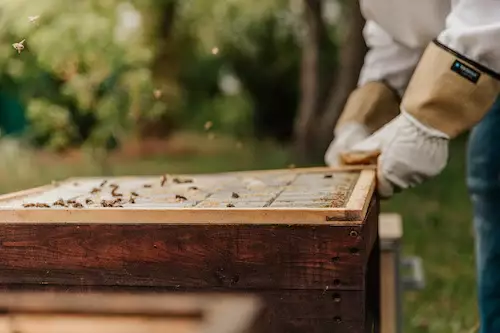
3. Mix salt with sugar to make sugar syrup.
Mixing salt with sugar to make sugar syrup for the bees is a great way to provide them with a source of energy.
- To make the syrup, mix 1 part white sugar with 4 parts water and 1/4 teaspoon of salt.
- Heat the mixture on the stove until it is completely dissolved.
- Then let the mixture cool before adding it to the bee feeder.
The salt helps to create an antiseptic environment in the feeder, which will discourage pests from invading the sugar syrup. Bees are attracted to the sugar syrup, so they will come to the feeder to feed on it.
It is important to keep the feeder filled with syrup so that the bees have a consistent source of food. Make sure to replace the syrup every couple of weeks to ensure the bees are receiving a fresh supply of energy.
4. Sprinkling salt over the frames of the hive.
Sprinkling salt over the frames of the hive is an effective method to help deter wax moths from infesting your beehives. Wax moths, or Galleria mellonella, are small insects that feed on the wax comb in beehives, causing damage and making it difficult for the bees to store honey and pollen. Sprinkling salt over the frames of the hive creates an environment that is not conducive to wax moths and can help prevent an infestation.
When sprinkling salt over the frames of the hive, it is important to be careful not to get it on the bees or the honey. The salt should be applied lightly, and evenly, to the frames to be most effective. The salt should also be applied when the hive is in its active state, as wax moths are more likely to enter a hive when it is inactive or in a state of dormancy.
- Start by gathering the necessary supplies: a salt shaker, a beekeeper’s hat, and a bee brush. Put on the beekeeper’s hat and the bee brush.
- Carefully inspect the frames of the hive for any pests or diseases.
- If you notice any pests or diseases, treat them accordingly.
- Once cleared of pests and disease, use the salt shaker to lightly sprinkle salt over the frames. Make sure to cover the entire frame and any crevices in between the frames.
- Pay particular attention to the edges of the frames and any cracks or crevices.
- Repeat this process for all the frames in the hive.
- Remove the beekeeper’s hat and bee brush and store them away safely.
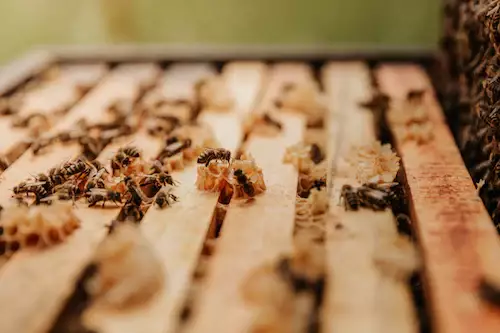
5. Mix a solution of salt and water.
Mixing a solution of salt and water can be a great way to help reduce the temperature of a hive during hot weather. This technique is sometimes referred to as “salt-water cooling” and can be easily done by mixing equal parts of salt and water and applying the solution to the outside of the hive. The saltwater will then evaporate, cooling the hive and providing relief from the heat.
- To apply the salt-water solution, you will need to use a spray bottle or a sponge to spread the solution evenly across the outside of the hive.
- It’s important to ensure that the solution is not applied too heavily, as this can cause the hive to become too cool.
- The solution should be applied in the early morning, when the air is still cool and the sun is not yet at its highest point in the sky.
- Once the salt-water solution has been applied, it’s important to monitor the temperature of the hive to ensure that the desired temperature has been achieved.
- If the temperature is too low, then the solution should be removed or reduced.
